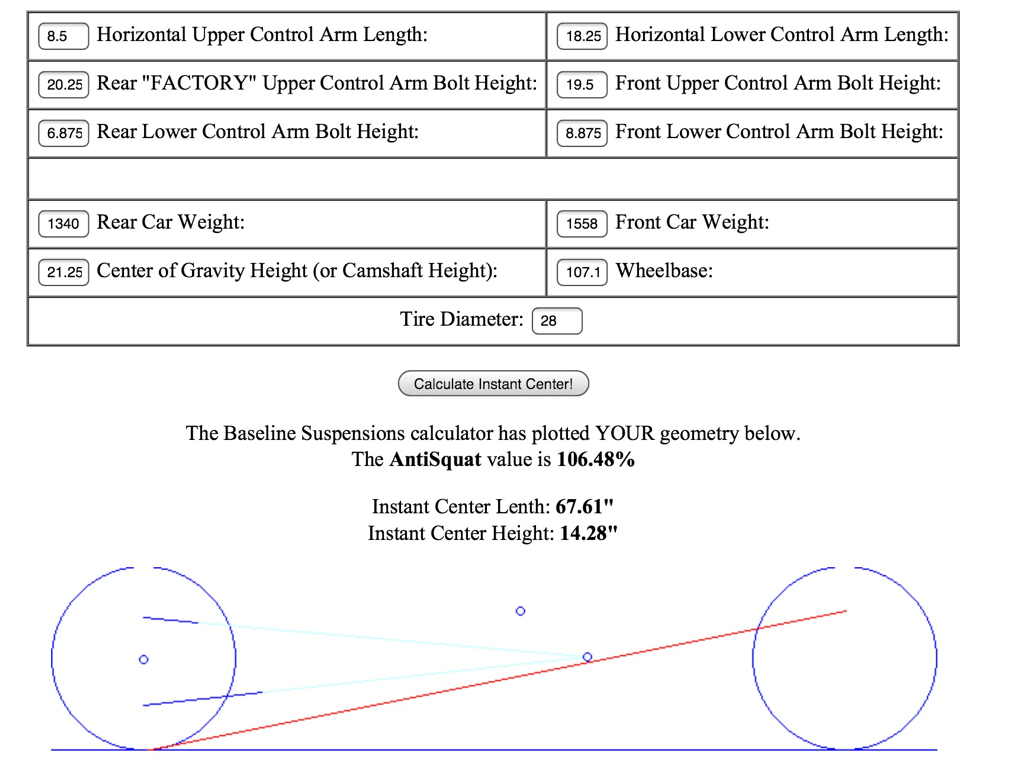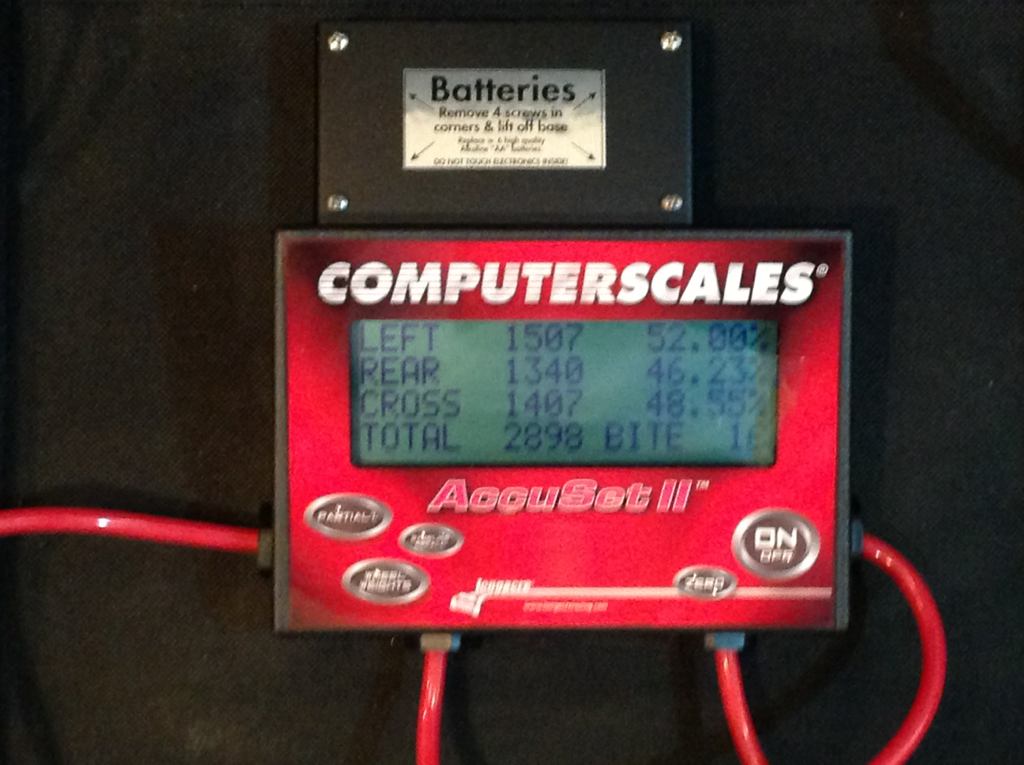Lots of great info in here. Lets keep this thread going. Anybody got any stats to add?
any chance you took measurements before you went all mini-tub on us?

Lots of great info in here. Lets keep this thread going. Anybody got any stats to add?

What rpm did you leave at?
If I only had a dollar for every time I've heard people wondering about that . . .With no movement in the suspension on launch is there no weight transfer?
Correct.
Here is a good example of weight transfer, but no squat or rise (rear) upon launching:
http://s455.photobucket.com/user/bmrfabrication/media/2011 Mustang Project Car/VIDEO0063.mp4.html
Notice the gap in the rear does not change, yet, the front rises? Pretty subtle 1.4 sixty foot pass, huh?
Next time I get this car on the lift, I will try and get some measurements to share. Our car HOOKS, and hooks HARD. We haven't gotten the tires to "break loose" since 2011.....lol
I changed my rear springs, lowered the front ride height, and installed BMR relocation brackets. Note I took ride height measurements from the bottom of the wheel arch this time. i am going to the track tonight, I will edit this post with 60' time later on.
Antisquat %: 106.48
IC length: 67.61
IC height: 14.28
springs front: Afco 14"150#
springs rear: Afco 14"125#
airbag: NO
ride height front: 27-1/2" (measured from floor to bottom of fenderwell arch)
ride height rear: 30-3/16
tire dia front: 26"
tire dia rear: 28
strut type front: QA1 single adjustable
strut type rear: Afco double adjustable
wheelbase: 107.1"
center gravity: 21-1/4" (crankshaft bolt + 6")
LCA relocation brackets: BMR
LCA position: Top
UCA bracket: YES,BMR
UCA position: Lower hole
pinion angle: -1.0deg
Weight rear tires W/driver 1340
Weight front tires W/driver 1558
Best 60' so far 1.75


So anyone know how much is this going to change if i replace the 28" rear tire with a 26"? Will I need to make any adjustments?
For a quick and dirty approximation . . .
If the diameter of front tires is also being reduced by 2", take an inch off of all of the rear suspension pivot heights and an inch off the CG height as well.
If the front tires are staying the same height as before, take an inch off the rear (axle side) upper and lower control arm bolt heights, about 0.92" off the forward (chassis side) upper bolt height, about 0.83" off the forward (chassis side) lower bolt height, and only drop the CG height by about 0.46".
FWIW, I probably wouldn't much worry about changes in antisquat that are less than about 2%, and I wouldn't bother with the decimal percent parts of the answers at all.
Norm
While it might be theoretically possible to do that for the static position, your bigger problem would be in modeling the UCA pivot co-ordinates to put the SVIC in the same place that the torque arm does, which is determined by a rather different-looking construction (that's not quite the same if the TA is connected at the chassis by a short link instead of through a bushed sleeve). Dynamically, SVIC migration with a TA differs from what it is with either a 3- or a 4-link, so this approach would be of limited value.Question for you Norm. If you were to say, install a Torque Arm and were curious to know what your %AS would be after the installation and you know the length of said Torque Arm can you approximate the %AS by changing the angle of the UCA in that calculator to get the IC length to the length of the torque arm?
While it might be theoretically possible to do that for the static position, your bigger problem would be in modeling the UCA pivot co-ordinates to put the SVIC in the same place that the torque arm does, which is determined by a rather different-looking construction (that's not quite the same if the TA is connected at the chassis by a short link instead of through a bushed sleeve). Dynamically, SVIC migration with a TA differs from what it is with either a 3- or a 4-link, so this approach would be of limited value.
If you have a Millikens' "Race Car Vehicle Dynamics" book handy, there is a picture and some descriptive text for torque arm side view geometry (Fig. 17.41). Be careful how you read it, as the construction line from the TA chassis side pickup point is not necessarily a true vertical line (and generally isn't, quite).
FWIW, I've also done up spreadsheets for four variations of the "TA" arrangement (quote marks intentional), and they all do axle steer as well.
Norm
Not as hard as you might think.In reality it's nothing more than mental self pleasuring anyway since that program will only show static %AS numbers rather than dynamic ones. It is, at best, an approximation anyway. The value that matters to me (coming out of a corner) is far too complex for this engineering school drop out to try and compute!
